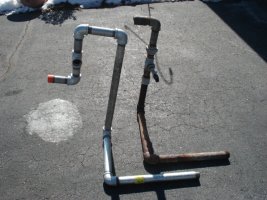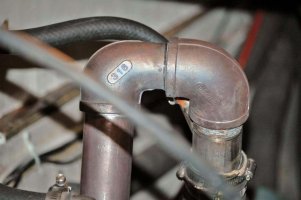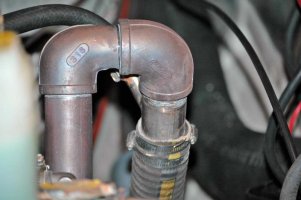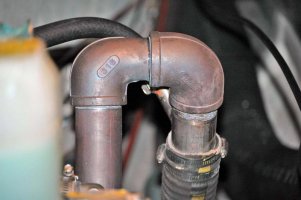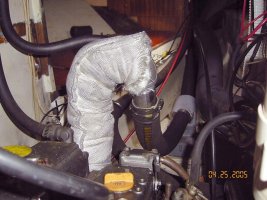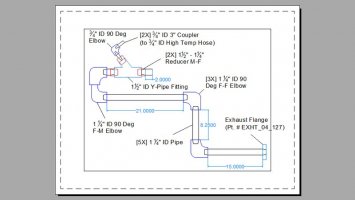A cautionary note about galvanized pipe.
David and all, Years before owning our boat, someone had used galvanized plumbing to reduce the Yanmar 3GMF exhaust hose from 2" to 1 1/2" which was the original with the Yanmar 2QM15 as it led to the original 1 1/2" muffler fittings. This reduction was clearly made up of bits and pieces from the plumbing section of a hardware store. Virtually for years, I always had a salt water puddle beneath the prop shaft packing gland and despite numerous times giving attention to that area, I could never get the water to stop appearing. Fortunately for me while in the slip with engine off, I chanced to bump the 2" hose near the nipple immediately down stream of the reducer only to have it completely separate from the galvanized nipple. Close inspection was breath taking. Without a clue that anything was going on, being hidden from view by the hose and clamps, the threaded end (read ungalvanized) of the nipple had been merrily rusting completely away comprising about 20% to 25% of the threads. There were mere fractions of an inch remaining before the rusting would have broken free from the hose and clamps on its own. The result is anyone's guess but I know there would have been a lot of water entering the inside of the hull along with great amounts of exhaust gases. Now I'm not saying not to use galvanized pipe but if it were me, I'd cut those exposed threads off first before mating pipe to hose. Also, smart money would check that joint for signs of water drips, rust, etc on a periodic basis. That said, there was not even a hint that my threads were rusting/rotting away with each use of the engine because it was all taking place far from view, yikes!! No more puddle now by the way, mystery solved. Glyn Judson, E31 hull #55, Marina del Rey, cA
